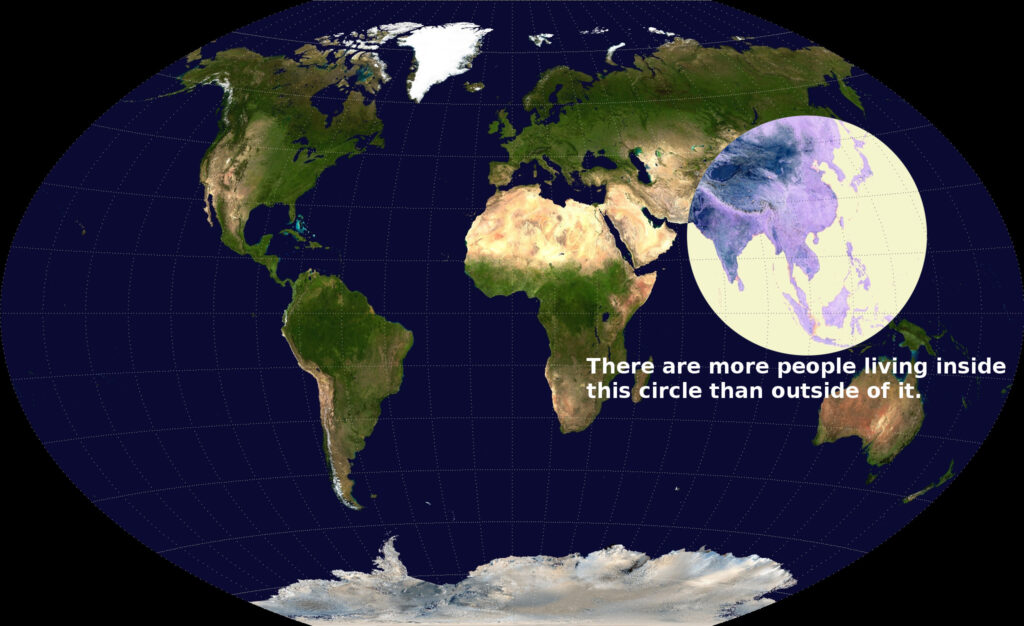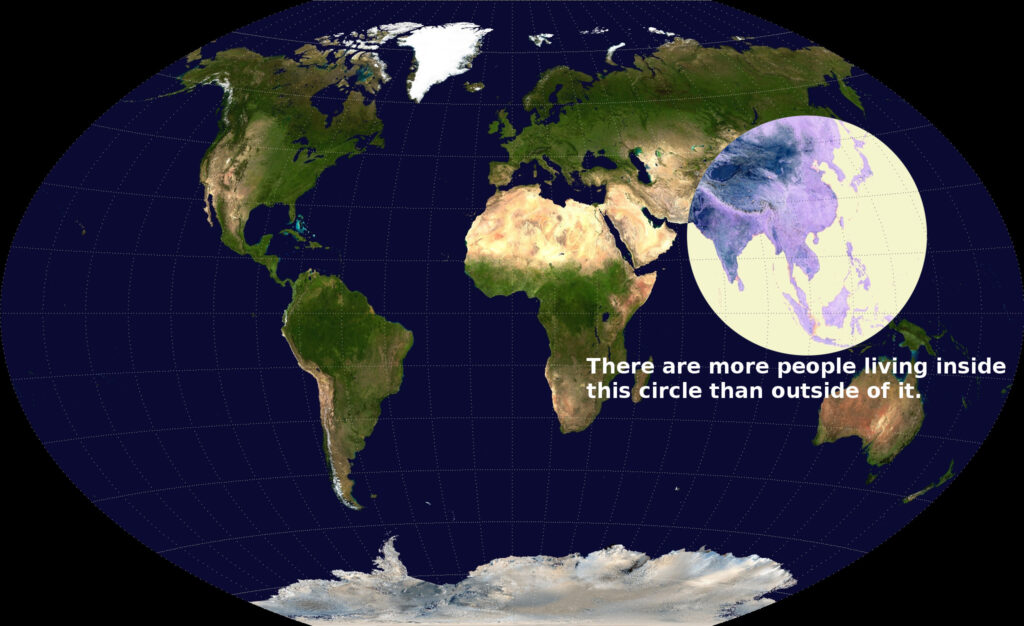
The world is full of fascinating facts and surprising statistics. One such intriguing revelation is that there are more people living inside a specific circle than outside of it. This circle encompasses not only a significant population but also a range of remarkable features and characteristics.
Looking at the map provided, it becomes evident that the circle holds numerous intriguing aspects. Firstly, it contains the highest mountain on Earth, Mount Everest, reaching majestic heights. Additionally, within this circle lies the Mariana Trench, the deepest known point in any ocean. These geographical landmarks add to the allure of the circle.
Moreover, the circle is home to significant religious populations. It harbors more Muslims, Hindus, and Buddhists than outside of its boundaries. The diverse tapestry of faiths found within this region reflects the cultural richness and religious diversity present in these lands. Interestingly, while the circle boasts these religious populations, it is important to note that there are still more Christians and Jews residing outside its confines.

When examining the population distribution within the circle, it becomes apparent that it houses several of the most populous countries in the world. China, India, Indonesia, Pakistan, Bangladesh, and Japan, respectively ranked as the first, second, fourth, sixth, seventh, and tenth most populous countries globally, all lie within this circle. Their collective populations contribute significantly to the concentration of people residing in this region.
Notably, the circle is also home to Mongolia, which holds the distinction of being the least sparsely populated country on Earth. With its vast landscapes and relatively small population, Mongolia stands as an interesting contrast within the densely inhabited circle.
However, it is essential to acknowledge that the circular representation of the map may not accurately reflect the true shape of the Earth. A projection called Winkel-tripel is used, and as with any map projection, there are distortions. While the circular shape may not be an exact representation of reality, it serves as an illustration to highlight the concentration of population within a specific area.
To create a more accurate circle, adjustments were made to the map. This revised circle, centered at 106.6° East and 26.6° North, includes Japan and India while trading sea area for additional land. The result is a circle that encompasses a larger population than the previous depiction. The revised circle incorporates parts of Afghanistan, the less densely populated areas of Kazakhstan, Tajikistan, and Kyrgyzstan, the densely populated regions of Uzbekistan, and a significant but sparsely inhabited section of Siberia.

It’s important to note that all map projections have inherent distortions, and this particular projection is non-conformal. The purpose of this representation is not to criticize but rather to shed light on the concentration of population within a specific area, offering an intriguing perspective on global demographics.
In conclusion, the fact that there are more people living inside a certain circle than outside of it presents a captivating insight into the world’s population distribution. This circle encompasses significant geographic features, diverse religious populations, and some of the most populous countries on the planet. While the map projection used may not be a perfect representation of the Earth, it serves as a thought-provoking visualization of the concentration of humanity within a defined region.

Leave a Reply